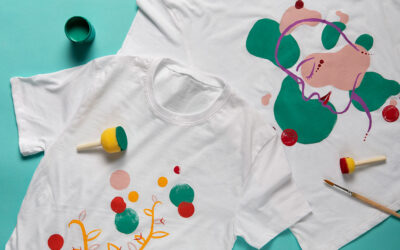Cloth nappies are better for the environment AND will save money. But how do you get started using cloth nappies? Rosemary Covey from Cottontail Nappies explains all.
What do you need to get started using cloth nappies?
- Enough cloth nappies to get you through 2–3 days between washing (ranging from 16–32, dependent on baby’s age).
- 2 large wet bags or reusable pail liners and a nappy pail or bucket.
- 1–2 travel-size wet bags for outings.
- Possible extras: biodegradable liners, nappy sprayer, cloth wipes.
What is a typical daily routine for using cloth nappies?
It is important that your daily routine is not disturbed by choosing to use cloth nappies over disposables. Thankfully, today’s cloth nappies are super-easy to use, and it’s estimated they add just five minutes to a typical day! Scrape any solid waste into the toilet (which you do for disposables anyway). Using biodegradable, flushable liners makes this super-easy. Then store the dirty nappies in a nappy bucket.
When you are ready to do a load of washing, empty the nappies into the washing machine and wash. Most parents do a wash every 2 to 3 days.
What are the cost savings of using cloth nappies?
The average cost to nappy a child for two years in disposable nappies is $1800. You can buy a generous set-up of cloth nappies for $300–$500, most of which should last two or more children. So cloth nappies cost about one tenth that of disposables.
What are the health concerns about using disposable nappies?
Disposable nappies contain traces of dioxin, an extremely toxic, carcinogenic by-product of the paper-bleaching process. They also contain tributyl-tin or TBT, a toxic pollutant known to cause hormonal problems in humans and animals, and sodium polyacrylate, a super-absorbent polymer that is highly toxic when inhaled and ingested.
What about the environmental concerns?
It is estimated that it takes about 250-500 years for a disposable nappy to break down, which is long after your children, grandchildren, and great, great, great-grandchildren are gone. Though disposable nappy instructions say that all faecal matter should be deposited in the toilet before discarding, less than 1% of all waste from single-use nappies goes into the sewage system, which adds raw faecal matter directly into landfill. Also, nappy production has a huge impact on global energy and pollution.
By Rosemary Covey from Cottontail Nappy Service
If you need help getting started with cloth nappies, Cottontail Nappy Service offers a 4-week trial period is the perfect way to get started. Cottontail can help with cloth nappy setup at home or at a child care centre.
Related Stories
The simple way to use cloth nappies
Bespoke cloth nappies now available for childcare services
Sunny Coast first for cloth nappies


